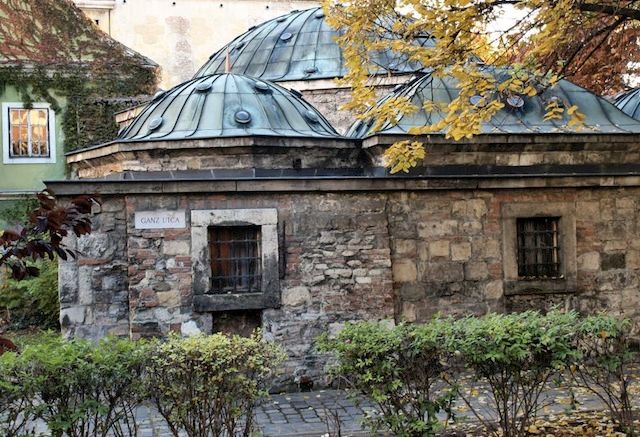Last Chance to Catch NYC's Holiday Notalgia Train
We met the voices of the NYC subway on our nostalgia ride this weekend!


It was cold outside in Budapest on the day I visited Széchenyi Bath (or fürdő in Hungarian), a Neo-baroque-style bathhouse built in 1913. Snow flurries were intermittent and wondrous, the chill broken by pockets of bright sunshine streaming between the cloud cover. It was about 34 degrees Fahrenheit and I wore only a swimsuit, my skin goose-pimpled as I crossed the outside courtyard toward the pool. Steam wafted from the surface of the thermal water, purported to be healing. I stepped in and sunk down, wading slowly through the vapor, the air smelling faintly of minerals, icy flakes melting on my shoulders.
There are roughly 1,300 natural thermal springs in Hungary, ranging from warm to scalding temperatures. Mineral water jets upward through a geological fault that runs along the Danube River, creating a lasting supply that the people of this region have been harnessing for nearly two thousand years for both recreational and therapeutic purposes. The Romans built Acquincum bathhouse along the Danube to aid in the general wellbeing of their soldiers stationed in the area. During the Ottoman Empire, the Turks used the springs for their cleansing sauna-like bath practices. And today, even in a modern age where prescription drugs are the globally dominant method of “healing” , visits to Hungarian baths are often medically subsidized for locals. Indeed, Széchenyi Fürdő is one of the largest bathhouses in Europe. Doctors commonly advise soaking in pools of various mineral compositions and temperatures, knitting modern medicine together with an ancient understanding of water’s revitalizing properties.
Although Acquincum now sits in ruins, there are a number of perennial bathhouses still operating. Király Fürdő—renovated and restored over the last four-hundred-plus years—is one of two Turkish baths in Budapest built in the sixteenth century, its Ottoman influence architecturally defined by domes and four octagonal pools. After conquering the town of Buda (on the west side of the Danube), Turkish ruler Arszlan Pasha ordered its erection, choosing the location specifically within his stronghold to ensure he could continue to bathe in the event of a siege, a prioritization that speaks to a significant and elemental belief in the benefits of thermal mineral water.

Király Fürdő building at Ganz Street. Photo Courtesy of Wikipedia Commons.
Arszlan also constructed the domed pools of Rudas Fürdő, later expanded upon by the Habsburg Austrians, and today a UNESCO World Heritage Site. Shafts of light pierce the octagonal pool room through stained glass in the cupola, creating a surreal, vibrant warmth of color. It’s possible to bathe naked at this fürdő, but before 2006 it was only for men. The policy has since been amended, and every Tuesday is now exclusively for women to soak sans swimsuits.
Gellért Fürdő is one of the more recently constructed bathhouses, decorated beautifully with mosaic tiles in the Art Nouveau style and found within the world-famous Gellért Hotel. The original bath here was first named mud bath, or Sárosfürdő, because of the rich silt that settled at the bottom of the pools. After its opening in 1918, it has since served as a recreational facility as well as a daytime outpatient hospital that includes an inhalatorium for asthma and chronic bronchitis patients. The curative potential of these particular springs was first discovered as far back as the thirteenth century; evidence shows that the site was a hospital during the Middle Ages. The water in the two pools contains minerals that have been easing and possibly even curing people of their physical ailments for centuries.
It’s easy to take this wealth of spring water for granted when it’s at your fingertips. A twinge of a headache and doctors are scribbling out “bath time” prescriptions for Hungarian citizens. Yet, this seems right to me, that whatever stresses the people of this country must endure, at least they have an affordable and soothing means to help them cope. But it’s more than medicinal. For many, baths are social gathering places, much like a night out at a pub, or a movie with a friend. And it’s also an opportunity for unadulterated repose at the end of a long workweek. This was my purpose at Széchenyi Fürdő. It was a definite form of preventative care, a deflation of accumulated stress as I reclined against the edge of the warm pool, tasting snowflakes, steam rising around me in tendrils.
Follow Untapped Cities on Twitter and Facebook! Get in touch with the author at @AmritKChima.
Subscribe to our newsletter